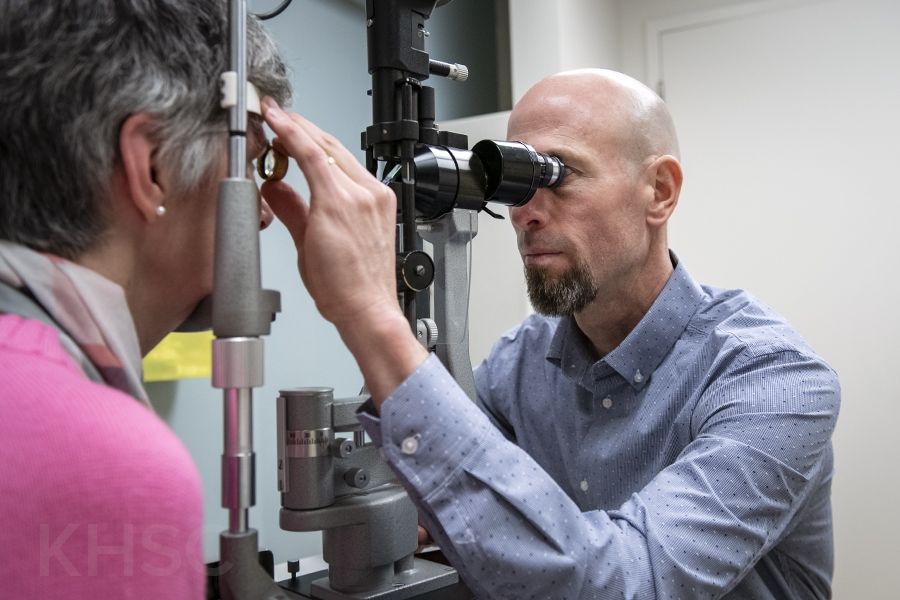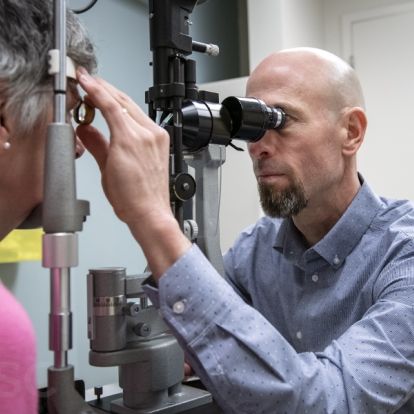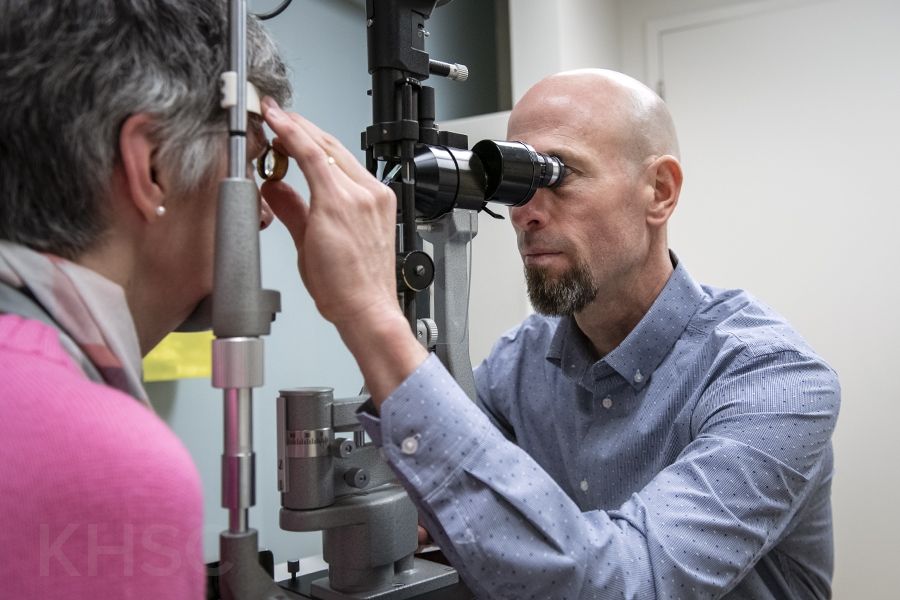Effective immediately masking is required for everyone when present on all inpatient units, in the Emergency Department (ED), the Urgent Care Centre (UCC), and the Children’s Outpatient Centre (COPC).

Glaucoma steals vision slowly and painlessly when left undetected, and half of the people with the sneaky eye disease don’t even know they have it and are at risk for irreversible blindness. Now, a first-ever quality standard is giving patients and health care providers a new level of defense against the so-called “silent thief.”
The new Glaucoma Quality Standard—the first of its kind for eye disease in Ontario—is a clear and comprehensive guide to what quality care looks like when it comes to treating glaucoma.
Released by Health Quality Ontario (HQO) in conjunction with the Provincial Vision Task Force, the standard is the work of an advisory committee co-chaired by Dr. Robert Campbell, a glaucoma specialist at Kingston Health Sciences Centre and Deputy Chair and Director of Research in the Department of Ophthalmology at Queen’s University.
Grounded in evidence-based care for adults with or at risk for primary open-angle glaucoma, the standard addresses the disease at three equally important levels: helping patients to know what to ask for in their care; informing health care professionals about the kind of care they should be offering; and guiding health care organizations in improving their performance in caring for patients.
“Quality standards in health care traditionally focus on clinical care and don’t consider the disease from the patient and system angles,” says Campbell. “This HQO standard is unique and powerful because it hits all three levels at once.”
He says developing the quality standard was a logical choice because glaucoma is so common and because it requires long-term interdisciplinary and integrated care to achieve the best outcomes. While the disease cannot be cured, its progression can be managed with regular eye examinations and treatments including medications, laser therapy and surgery.
“We know that there are gaps and variations in glaucoma care across Ontario, and also that the disease involves multiple levels of care providers,” says Campbell. “Our challenge was to make all the moving parts work better together so that everyone has the same basic level of clinical care.”
The standard is rich in guidelines, tools and resources. A conversation guide empowers patients to ask for and receive the best care plan for their glaucoma. For health care professionals—including family doctors, optometrists and ophthalmologists—there is guidance around assessing, monitoring, treating and referring patients, and for health system leaders and administrators there are recommendations for measuring progress in delivering quality care locally and provincially.
Three years in the making, the new standard is designed to build trust and partnership with patients, says Campbell.
“Our health care system requires patients to play a big role in navigating the system themselves, which can be difficult when you have a chronic disease such as glaucoma where you may move from provider to provider and not always understand why,” he says.
“Patients need to be engaged and proactive in their care, so our goal was to help people understand their disease, know what to expect and know what questions to ask. In that sense, the standard adds a whole new dimension to quality eye care.”
For Campbell, the new standard boils down to making the health care system work better.
“Glaucoma has an enormous impact on quality of life,” he says, “but by diagnosing people early and ensuring they see the right professional at the right time much of that impact can be prevented.”
Gallery


Co-chaired by KHSC glaucoma specialist Dr. Robert Campbell (right), an advisory committee has created a new Glaucoma Quality Standard that is unique and powerful because it addresses glaucoma from three angles at once: patient, health professional and he



